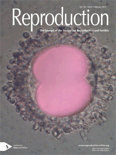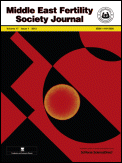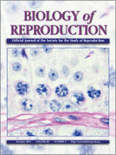
Reproductive Biology
Scope & Guideline
Transforming Knowledge into Practice in Reproductive Biology
Introduction
Aims and Scopes
- Molecular Mechanisms of Reproduction:
Research on the molecular and cellular processes that govern reproduction, including hormonal signaling pathways, gene expression, and the role of non-coding RNAs in reproductive health. - Reproductive Pathologies:
Studies investigating various reproductive disorders such as infertility, endometriosis, polycystic ovary syndrome (PCOS), and their underlying mechanisms, providing insights into potential therapeutic approaches. - Assisted Reproductive Technologies (ART):
Exploration of techniques and technologies aimed at improving fertility outcomes, including in vitro fertilization (IVF), embryo transfer, and the use of stem cells in reproductive medicine. - Environmental and Genetic Influences:
Examination of how environmental factors (e.g., endocrine disruptors, diet) and genetic predispositions affect reproductive health and fertility across different species. - Comparative Reproductive Biology:
Comparative studies that highlight reproductive processes in various species, contributing to a broader understanding of reproductive biology and its applications in veterinary and human medicine.
Trending and Emerging
- Role of MicroRNAs and Non-Coding RNAs:
Research on microRNAs and other non-coding RNAs is on the rise, emphasizing their regulatory roles in reproductive processes and potential as biomarkers for reproductive disorders. - Impact of Environmental Exposures:
There is a growing body of work exploring how environmental factors, such as pollutants and endocrine disruptors, affect reproductive health, indicating a trend towards understanding the interplay between environment and reproduction. - Applications of Stem Cell Technology:
Emerging studies are focusing on the use of stem cells in reproductive medicine, including their potential for generating gametes and treating infertility, showcasing innovative approaches in reproductive biology. - Integrative Approaches in Reproductive Health:
Research that combines molecular biology, immunology, and environmental science to address complex reproductive health issues is gaining traction, reflecting a holistic view of reproductive biology. - Bioinformatics and Computational Biology:
The application of bioinformatics tools to analyze large datasets related to reproductive biology is becoming more prevalent, facilitating insights into gene regulation and reproductive disorders.
Declining or Waning
- Traditional Fertility Treatments:
There has been a noticeable decline in research focused solely on traditional fertility treatments, such as standard hormonal therapies, as newer methodologies and technologies gain prominence. - Basic Animal Models in Reproductive Studies:
Research utilizing basic animal models (like rodents) for reproductive studies appears to be waning in favor of more complex models that better mimic human reproductive physiology. - Single-Factor Studies in Reproductive Health:
Studies that investigate single factors affecting reproduction (e.g., one hormone or one environmental toxin) are becoming less common, as there is a growing recognition of the complex interactions involved. - Conventional Genetic Studies:
Studies focusing solely on classical genetics without integrating modern genomic approaches (like CRISPR or RNA sequencing) are less frequently published, as the field moves toward more comprehensive genomic analyses.
Similar Journals

REPRODUCTION
Exploring the frontiers of reproductive science.REPRODUCTION, published by BIOSCIENTIFICA LTD, stands at the forefront of research in the fields of reproductive and developmental biology. With a focus on advancing our understanding of reproductive health and mechanisms, the journal has garnered an impressive reputation, consistently ranking in the first quartile for key categories including Embryology, Endocrinology, Obstetrics and Gynecology, and Reproductive Medicine in 2023. Notably, it holds an esteemed position in the Scopus rankings, with high percentiles that reflect its significant impact in the scientific community. The journal is committed to open access, promoting the broad dissemination of high-quality research to facilitate innovative discoveries and interdisciplinary collaboration. Situated in the United Kingdom, REPRODUCTION serves as a vital resource for researchers, professionals, and students eager to contribute to the evolving landscape of reproductive sciences and related fields.

Middle East Fertility Society Journal
Advancing fertility knowledge for a healthier future.Middle East Fertility Society Journal is a premier open-access publication established in 1996 that caters to the fields of Obstetrics and Gynecology as well as Reproductive Medicine. Published by SPRINGER in Egypt, this journal has made significant strides in disseminating high-quality research and advancements in reproductive health, achieving a 2023 Scopus rank of #102 in Obstetrics and Gynecology and #47 in Reproductive Medicine, placing it in the 51st and 48th percentiles respectively. With an aim to foster collaboration and innovation in the fertility sector, it welcomes researchers and practitioners to share their findings and insights, contributing to the global discourse on reproductive issues. As an open-access journal since 2010, it ensures that the latest research is readily available to a broad audience, enhancing accessibility and knowledge transfer in the vital area of reproductive health.

BIOLOGY OF REPRODUCTION
Elevating Knowledge in Cell and Reproductive BiologyBIOLOGY OF REPRODUCTION is a premier journal published by Oxford University Press Inc, dedicated to advancing research in the fields of reproductive biology, cell biology, and reproductive medicine. With an impressive impact factor and a strong ranking as Q1 in reproductive medicine and miscellaneous medicine, as well as Q2 in cell biology, this journal offers a vital platform for disseminating innovative findings and pivotal studies that shape our understanding of reproductive processes. Since its inception in 1969, BIOLOGY OF REPRODUCTION has become a key resource for scientists, clinicians, and students alike, providing insights that drive the future of reproductive health and research. Although not an open-access publication, it remains a respected authority, reflecting a commitment to high-quality peer-reviewed articles. The journal's comprehensive scope includes molecular and cellular aspects of reproduction, reproductive health, and associated technologies, making it indispensable for professionals looking to stay at the forefront of breakthroughs within the field.

INVERTEBRATE REPRODUCTION & DEVELOPMENT
Decoding the Secrets of Invertebrate Reproductive Mechanisms.INVERTEBRATE REPRODUCTION & DEVELOPMENT, published by Taylor & Francis Ltd, is a pivotal journal in the fields of Animal Science and Zoology, with a significant focus on the reproductive and developmental processes of invertebrates. Established in 1989 and running through 2024, this journal has become an essential resource for researchers, professionals, and students interested in the intricacies of invertebrate biology. With an impressive Q2 ranking in Animal Science and Zoology and a dedicated readership, the journal explores a variety of topics including reproductive mechanisms, developmental stages, and phylogenetic aspects of invertebrates. While currently not open access, the journal provides robust scholarly content that contributes to advancing knowledge in both basic and applied biological sciences. The Scopus rankings further underscore its relevance, particularly in the domains of developmental biology and genetics, making it a noteworthy publication for those engaged in this dynamic field of research.

REPRODUCTIVE BIOMEDICINE ONLINE
Pioneering insights in reproductive healthcare and biomedicine.Reproductive Biomedicine Online, published by Elsevier, is a leading peer-reviewed journal that has established itself as a pivotal resource in the fields of Developmental Biology, Obstetrics and Gynecology, and Reproductive Medicine. With an impressive Impact Factor and a Q1 ranking in its respective disciplines as of 2023, this journal provides a platform for innovative research and comprehensive reviews that contribute to advancements in reproductive healthcare. The journal boasts rigorous Scopus rankings, placing it within the top tiers of its categories, which underscores its significance in shaping contemporary biomedical inquiry. Although not open access, it remains widely accessible through institutional subscriptions, making its wealth of knowledge available to researchers, clinicians, and students alike. Since its inception in 2000, Reproductive Biomedicine Online has been committed to fostering a deeper understanding of reproductive processes and biomedicine, ensuring that its content remains relevant and impactful in addressing challenges in reproductive health, thereby championing exceptional scientific discourse.

ZYGOTE
Unraveling Cellular Mysteries, One Study at a Time.ZYGOTE is a prominent academic journal published by Cambridge University Press, focusing on the fields of Cell Biology and Developmental Biology. Established in 1993, this journal serves as a platform for high-quality research that advances our understanding of the complex processes that underlie cellular and developmental mechanisms. While currently classified in the Q4 quartile for both fields, ZYGOTE provides valuable insights and contributions from early-stage research to established studies, making it a noteworthy resource for researchers and professionals seeking to explore innovative developments in biology. Although it does not offer open access, the journal maintains rigorous peer-review standards to ensure the integrity and relevance of the published work. With its ongoing commitment to disseminating knowledge, ZYGOTE plays a significant role in the scientific community, fostering collaboration and inspiration among students, researchers, and professionals alike.

Reproductive Biology and Endocrinology
Fostering Innovation in Reproductive and Endocrine ResearchReproductive Biology and Endocrinology, published by BMC, is a distinguished open-access journal established in 2003, catering to researchers and professionals in the interdisciplinary fields of reproductive biology, endocrinology, and related biomedical sciences. With a notable impact in 2023, the journal has achieved Q1 rankings in Obstetrics and Gynecology, Reproductive Medicine, and Endocrinology, alongside a Q2 ranking in Developmental Biology, establishing itself as a pivotal source of high-quality research and insights. The journal's commitment to freely accessible research promotes knowledge dissemination across its domains, which is crucial for advancing understanding of reproductive health and endocrine mechanisms. With a robust Scopus ranking showcasing its relevance—17th out of 209 in Obstetrics and Gynecology, and 8th out of 90 in Reproductive Medicine—it serves as an essential resource for academics and clinicians alike, facilitating innovative research and fostering collaboration within the global scientific community.

Systems Biology in Reproductive Medicine
Pioneering research at the intersection of biology and reproductive health.Systems Biology in Reproductive Medicine, published by Taylor & Francis Inc, is a leading journal dedicated to advancing the understanding of reproductive health through the lens of systems biology. With an ISSN of 1939-6368 and an E-ISSN of 1939-6376, this journal provides an essential platform for researchers and practitioners in the fields of reproductive medicine and urology. Although it primarily operates under a subscription model, the journal remains a valuable resource, featuring cutting-edge research and comprehensive reviews that reflect its Q2 ranking in both Reproductive Medicine and Urology categories. Recognized for its impactful research, indicated by its ranks of #37/120 and #30/90 in Scopus for Urology and Reproductive Medicine respectively, it addresses complex biological systems and their implications in reproductive health. Aimed at facilitating interdisciplinary collaboration, the journal covers a wide array of topics relevant to both the medical and scientific communities, making it an indispensable resource for ongoing education and advancements in reproductive medicine.

Animal Reproduction
Innovating insights into animal reproductive health.Animal Reproduction is a premier open-access journal published by the Brazilian Coll Animal Reproduction, focusing on the dynamic field of reproductive biology within both veterinary science and animal husbandry. Established in 2004, the journal has rapidly gained prominence, securing a Q2 ranking in both Animal Science and Zoology as well as veterinary disciplines as of 2023. With a growing impact factor and an engaged readership, Animal Reproduction serves as a vital platform for researchers, professionals, and students seeking to disseminate and gain insights into the latest studies and innovations in animal reproductive health and technology. Based in Brazil, the journal's content spans a wide array of topics essential for advancing the scientific understanding of reproduction in animals, thus contributing to improved practices in veterinary medicine and livestock management. The journal is indexed in major databases such as Scopus, ensuring that the research published is accessible to a global audience. Whether you're a seasoned researcher or a student looking to deepen your knowledge, Animal Reproduction is indispensable for anyone engaged in this critical area of study.

ANIMAL REPRODUCTION SCIENCE
Leading the Charge in Reproductive ScienceANIMAL REPRODUCTION SCIENCE, published by Elsevier, is a leading journal dedicated to the field of animal reproduction and developmental biology. With an ISSN of 0378-4320 and an E-ISSN of 1873-2232, it serves as a vital resource for researchers, professionals, and students interested in advancing their understanding of reproductive mechanisms across various species. The journal has been recognized for its high-quality contributions, achieving a Q1 ranking in Animal Science and Zoology and showcasing its significant impact in the areas of Endocrinology and Veterinary Medicine as per the 2023 category quartiles. Covering a wide range of topics from reproductive physiology to genetic implications, this journal not only highlights innovative research but also fosters interdisciplinary dialogue in the rapidly evolving world of animal science. Though not currently offering open access, it remains a crucial platform for disseminating pivotal research findings from across the globe. With its rich history dating back to 1936, ANIMAL REPRODUCTION SCIENCE continues to drive excellence in animal reproduction studies, positioning itself at the forefront of the field, and solidifying its relevance in both science and industry.